-
 Bitcoin
Bitcoin $87,915.1013
4.01% -
 Ethereum
Ethereum $1,626.0336
3.05% -
 Tether USDt
Tether USDt $1.0002
0.03% -
 XRP
XRP $2.1225
3.25% -
 BNB
BNB $603.9394
2.51% -
 Solana
Solana $138.6104
1.03% -
 USDC
USDC $1.0000
0.01% -
 Dogecoin
Dogecoin $0.1612
4.65% -
 TRON
TRON $0.2431
-0.84% -
 Cardano
Cardano $0.6407
4.19% -
 Chainlink
Chainlink $13.4436
2.16% -
 Avalanche
Avalanche $20.5554
5.48% -
 UNUS SED LEO
UNUS SED LEO $9.0885
-2.49% -
 Stellar
Stellar $0.2597
7.37% -
 Toncoin
Toncoin $3.0010
0.25% -
 Shiba Inu
Shiba Inu $0.0...01257
1.68% -
 Sui
Sui $2.2420
6.60% -
 Hedera
Hedera $0.1711
4.33% -
 Bitcoin Cash
Bitcoin Cash $344.5133
3.21% -
 Polkadot
Polkadot $3.9101
1.15% -
 Hyperliquid
Hyperliquid $18.1893
5.38% -
 Litecoin
Litecoin $80.0892
5.05% -
 Bitget Token
Bitget Token $4.4777
1.97% -
 Dai
Dai $1.0000
0.00% -
 Ethena USDe
Ethena USDe $0.9994
0.01% -
 Pi
Pi $0.6362
1.91% -
 Monero
Monero $214.2887
-0.67% -
 Uniswap
Uniswap $5.4298
4.03% -
 Pepe
Pepe $0.0...07950
6.54% -
 Aptos
Aptos $5.1342
2.79%
how to store crypto in cold wallet
Cold wallets, both hardware and paper, offer secure offline storage for cryptocurrencies, requiring users to generate private and public keys and transfer their digital assets for maximum protection.
Oct 15, 2024 at 12:54 pm

How to Store Crypto in a Cold Wallet
Step 1: Choose a Cold Wallet
Cold wallets come in two main types: hardware wallets and paper wallets.
- Hardware wallets are physical devices that store your private keys offline. They cost between $100 and $500.
- Paper wallets are simply pieces of paper with your private keys printed on them. They're free to use, but they're also less secure than hardware wallets.
Step 2: Create a Wallet
Once you've chosen a cold wallet, you need to create a new wallet. This will generate a new public key and private key.
- Your public key is your wallet address. You can share it with the people and services you do business with.
- Your private key is the key to your wallet. You should never share it with anyone.
Step 3: Transfer Your Crypto to Your Cold Wallet
Once you've created a wallet, you need to transfer your crypto from your exchange or hot wallet to your cold wallet.
To do this, you'll need to:
- Open your cold wallet software.
- Click on the "Receive" tab.
- Copy the public key for your wallet.
- Open your exchange or hot wallet.
- Click on the "Send" tab.
- Paste the public key for your cold wallet into the "Recipient" field.
- Enter the amount of crypto you want to send.
- Click on the "Send" button.
Step 4: Store Your Cold Wallet Securely
Once you've transferred your crypto to your cold wallet, you need to store it securely.
The best way to do this is to keep it in a safe place, such as a safe deposit box or a fireproof safe.
You should also make a backup of your private key in case your cold wallet is lost or stolen.
Step 5: Use Your Cold Wallet
To use your cold wallet, you'll need to connect it to your computer.
Once you've connected your wallet, you'll be able to send and receive crypto.
To send crypto, you'll need to:
- Open your cold wallet software.
- Click on the "Send" tab.
- Paste the public key for the recipient's wallet into the "Recipient" field.
- Enter the amount of crypto you want to send.
- Click on the "Send" button.
To receive crypto, you'll need to:
- Open your cold wallet software.
- Click on the "Receive" tab.
- Copy the public key for your wallet.
- Give the public key to the person or service you're receiving crypto from.
Additional Tips
- Never store your private key online.
- Keep your cold wallet safe from physical damage.
- Back up your private key in case your cold wallet is lost or stolen.
- Use a strong password to protect your cold wallet software.
Disclaimer:info@kdj.com
The information provided is not trading advice. kdj.com does not assume any responsibility for any investments made based on the information provided in this article. Cryptocurrencies are highly volatile and it is highly recommended that you invest with caution after thorough research!
If you believe that the content used on this website infringes your copyright, please contact us immediately (info@kdj.com) and we will delete it promptly.
- As the Crypto Market Evolves, XRP and Dogecoin Are Back in the Spotlight
- 2025-04-22 00:00:44
- Onchain social media platform Zora said its ZORA token will go live
- 2025-04-22 00:00:44
- Bitcoin Eyes $88,000 Breakout as Safe-Haven Narrative Gains Steam
- 2025-04-21 23:55:12
- As the Cryptocurrency Market Begins to Recover and Bitcoin Moves Closer to the $90,000 Mark, Investor Interest Is Gradually Returning
- 2025-04-21 23:55:12
- Blurring the Lines Between Decentralized Finance and Traditional Finance, Ripple's XRP Ledger (XRPL) Is at the Center of a New Attempt to Integrate Blockchain into the Heart of Institutional Trading
- 2025-04-21 23:50:13
- MicroStrategy Adds Another $555M Bitcoin Buy to Its Portfolio as BTC Trades Near $85K
- 2025-04-21 23:50:13
Related knowledge
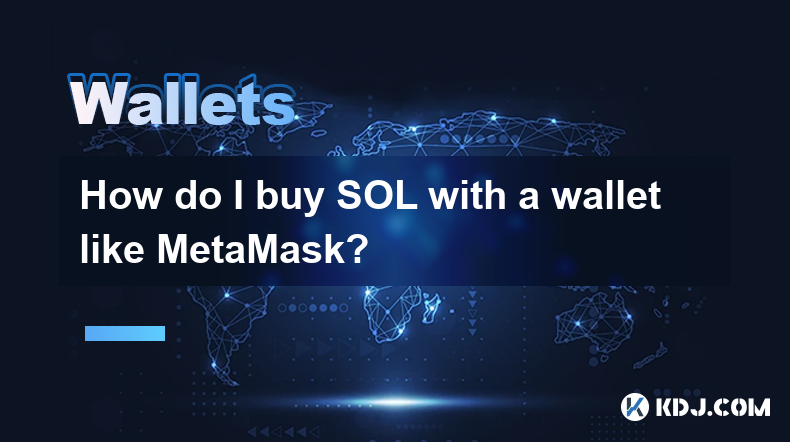
How do I buy SOL with a wallet like MetaMask?
Apr 20,2025 at 01:35pm
How do I Buy SOL with a Wallet Like MetaMask? Purchasing Solana (SOL) using a wallet like MetaMask involves a few steps, as MetaMask primarily supports Ethereum and Ethereum-based tokens. However, with the help of decentralized exchanges (DEXs) and some intermediary steps, you can acquire SOL. This article will guide you through the process in detail. S...

How do I buy and sell SOL directly with a cryptocurrency wallet?
Apr 19,2025 at 05:35pm
Introduction to Buying and Selling SOL with a Cryptocurrency WalletBuying and selling Solana (SOL) directly from a cryptocurrency wallet offers a convenient and secure way to manage your digital assets. Cryptocurrency wallets are essential tools for anyone looking to interact with the Solana blockchain. They allow you to store, send, and receive SOL wit...
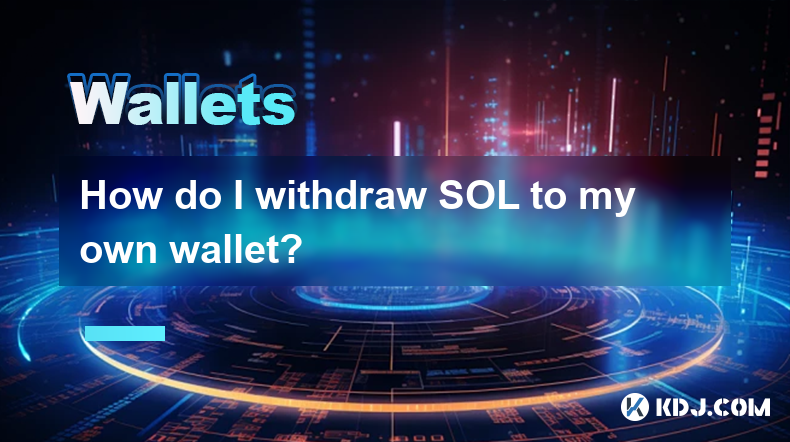
How do I withdraw SOL to my own wallet?
Apr 20,2025 at 04:21pm
Introduction to Withdrawing SOL to Your Own WalletWithdrawing Solana (SOL) to your own wallet is a straightforward process, but it requires careful attention to detail to ensure that your funds are transferred safely and efficiently. SOL is the native cryptocurrency of the Solana blockchain, known for its high throughput and low transaction fees. Whethe...
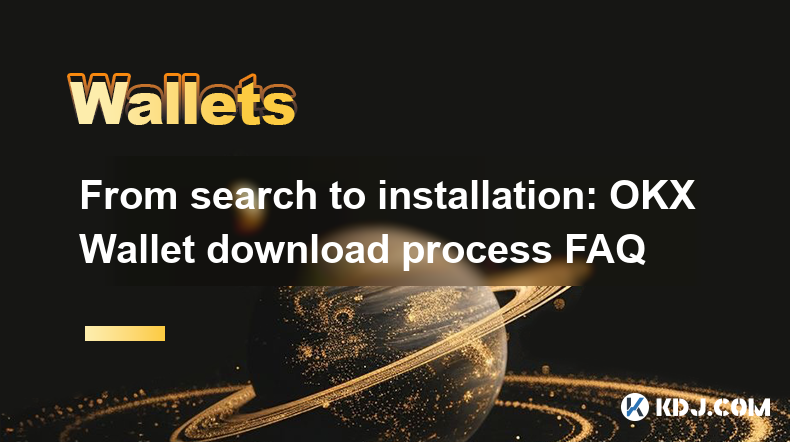
From search to installation: OKX Wallet download process FAQ
Apr 17,2025 at 02:00pm
The OKX Wallet is a popular choice among cryptocurrency enthusiasts for managing their digital assets securely and efficiently. Understanding the process from searching for the wallet to its installation can be crucial for new users. This article will guide you through the entire process, providing detailed steps and answers to frequently asked question...
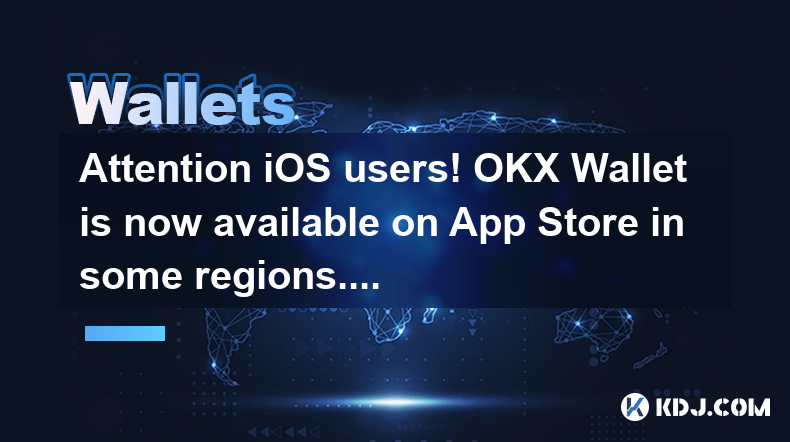
Attention iOS users! OKX Wallet is now available on App Store in some regions. How to check its availability?
Apr 20,2025 at 05:21pm
Attention iOS users! OKX Wallet is now available on App Store in some regions. If you're eager to check its availability and start using this versatile cryptocurrency wallet, follow our detailed guide. We'll walk you through the steps to confirm if OKX Wallet is accessible in your region, and provide insights into its features and benefits. Checking OKX...
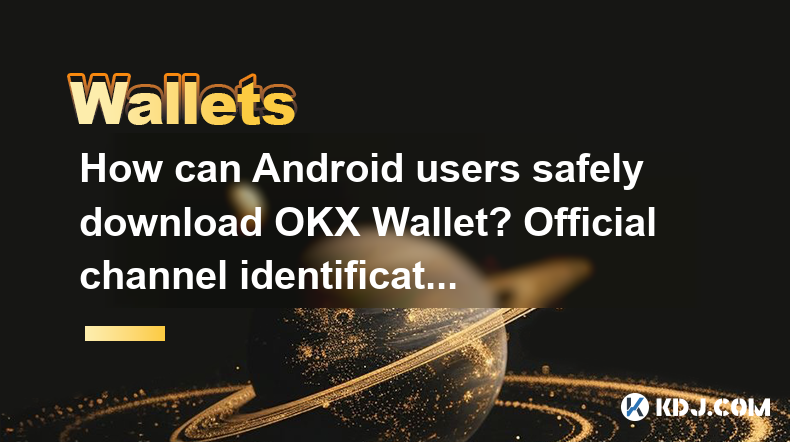
How can Android users safely download OKX Wallet? Official channel identification guide
Apr 19,2025 at 10:50pm
How can Android users safely download OKX Wallet? Official channel identification guide Ensuring the safety and security of your cryptocurrency assets begins with downloading apps from trusted sources. For Android users interested in using OKX Wallet, it's crucial to identify and use the official channels to avoid downloading malicious software. This gu...

How do I buy SOL with a wallet like MetaMask?
Apr 20,2025 at 01:35pm
How do I Buy SOL with a Wallet Like MetaMask? Purchasing Solana (SOL) using a wallet like MetaMask involves a few steps, as MetaMask primarily supports Ethereum and Ethereum-based tokens. However, with the help of decentralized exchanges (DEXs) and some intermediary steps, you can acquire SOL. This article will guide you through the process in detail. S...

How do I buy and sell SOL directly with a cryptocurrency wallet?
Apr 19,2025 at 05:35pm
Introduction to Buying and Selling SOL with a Cryptocurrency WalletBuying and selling Solana (SOL) directly from a cryptocurrency wallet offers a convenient and secure way to manage your digital assets. Cryptocurrency wallets are essential tools for anyone looking to interact with the Solana blockchain. They allow you to store, send, and receive SOL wit...

How do I withdraw SOL to my own wallet?
Apr 20,2025 at 04:21pm
Introduction to Withdrawing SOL to Your Own WalletWithdrawing Solana (SOL) to your own wallet is a straightforward process, but it requires careful attention to detail to ensure that your funds are transferred safely and efficiently. SOL is the native cryptocurrency of the Solana blockchain, known for its high throughput and low transaction fees. Whethe...

From search to installation: OKX Wallet download process FAQ
Apr 17,2025 at 02:00pm
The OKX Wallet is a popular choice among cryptocurrency enthusiasts for managing their digital assets securely and efficiently. Understanding the process from searching for the wallet to its installation can be crucial for new users. This article will guide you through the entire process, providing detailed steps and answers to frequently asked question...

Attention iOS users! OKX Wallet is now available on App Store in some regions. How to check its availability?
Apr 20,2025 at 05:21pm
Attention iOS users! OKX Wallet is now available on App Store in some regions. If you're eager to check its availability and start using this versatile cryptocurrency wallet, follow our detailed guide. We'll walk you through the steps to confirm if OKX Wallet is accessible in your region, and provide insights into its features and benefits. Checking OKX...

How can Android users safely download OKX Wallet? Official channel identification guide
Apr 19,2025 at 10:50pm
How can Android users safely download OKX Wallet? Official channel identification guide Ensuring the safety and security of your cryptocurrency assets begins with downloading apps from trusted sources. For Android users interested in using OKX Wallet, it's crucial to identify and use the official channels to avoid downloading malicious software. This gu...
See all articles






















































































